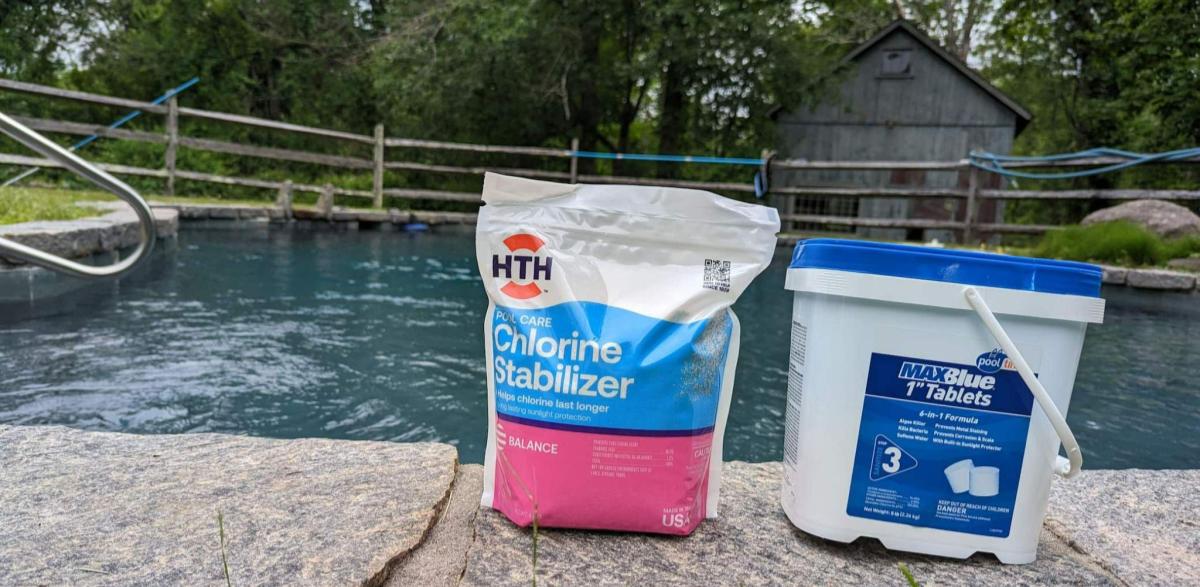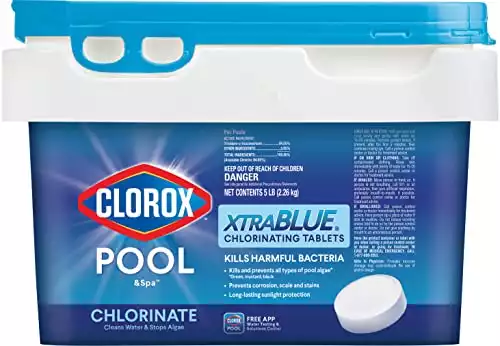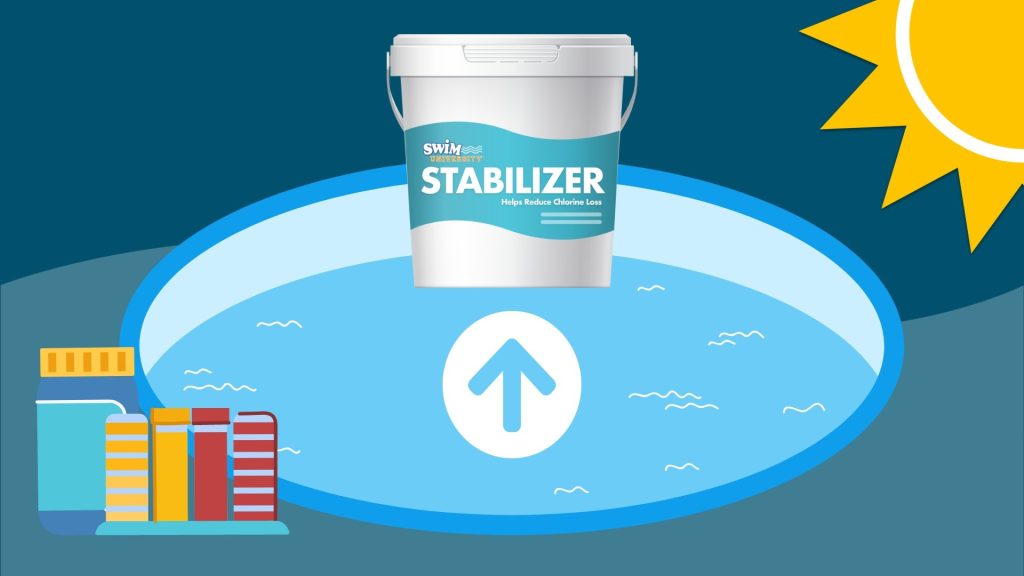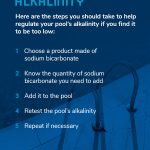To raise cyanuric acid in your pool, add a cyanuric acid pool stabilizer according to the manufacturer’s instructions. Maintaining the proper levels of chemicals in your pool is essential for keeping the water clean and safe for swimming.
One such chemical is cyanuric acid, also known as pool stabilizer. Cyanuric acid helps protect the chlorine in your pool from being broken down by sunlight, thus extending its effectiveness. However, if the cyanuric acid levels are too low, the chlorine may dissipate too quickly, leading to an inefficient disinfection process.
We will discuss how to accurately and effectively raise the cyanuric acid levels in your pool. By following these steps, you can ensure that your pool’s chemical balance is in check and that you provide a safe and enjoyable swimming experience for everyone.

Credit: www.wikihow.com
Testing Cyanuric Acid Levels
Testing cyanuric acid levels in your pool is crucial to maintaining the proper balance of chemicals for optimal water quality.
Using Test Strips Or Liquid Test Kits
When testing cyanuric acid levels, you can choose between using test strips or liquid test kits. Test strips are convenient and easier to use, providing a quick snapshot of the cyanuric acid levels in your pool water. On the other hand, liquid test kits may offer more accurate results, especially for detailed testing or when adjusting chemical levels.
Interpreting Test Results
After conducting the test, it’s important to accurately interpret the results to determine the cyanuric acid concentration in your pool water. Remember, the optimal cyanuric acid level for a swimming pool typically falls between 30-50 parts per million (ppm) to ensure UV stability and chlorine efficiency.

Credit: www.testyourownpool.com
Factors Affecting Cyanuric Acid Levels
Factors affecting cyanuric acid levels in a pool can significantly impact water chemistry and the overall effectiveness of chlorine. Understanding these factors is crucial for maintaining a well-balanced pool environment. Let’s delve into the key considerations that influence cyanuric acid levels.
Impact Of Sunlight And Pool Usage
Sunlight is a primary influencer of cyanuric acid levels in a pool. Ultraviolet (UV) rays from the sun can cause cyanuric acid to break down over time, reducing its effectiveness in stabilizing chlorine. Pools that are frequently exposed to direct sunlight are more vulnerable to rapid cyanuric acid depletion. Similarly, high pool usage can contribute to faster degradation of cyanuric acid, emphasizing the need for regular monitoring and maintenance.
Influence Of Chemical Balances
Various chemical balances in the pool water can impact cyanuric acid levels. pH levels play a crucial role, as high pH can accelerate the degradation of cyanuric acid, while low pH can cause it to linger at excessive levels. Additionally, high levels of total dissolved solids (TDS) can interfere with cyanuric acid’s effectiveness. Maintaining proper chemical balances is essential for ensuring optimal cyanuric acid levels and overall water quality.
Methods To Raise Cyanuric Acid
To raise cyanuric acid in a pool, consider using pool stabilizer or cyanuric acid granules. Follow manufacturer’s instructions for proper dosage and test levels regularly. Keep pool water balanced to ensure effectiveness and prevent issues with chlorine disinfection.
Adding Stabilizer Directly To The Pool
One way to raise cyanuric acid levels in your pool is by adding stabilizer directly to the water.
This method is simple and effective in boosting cyanuric acid levels quickly.
Using Cyanuric Acid Products
Another method is to use specialized cyanuric acid products designed for pool maintenance.
These products are formulated to provide a controlled release of cyanuric acid into the pool.

Credit: www.swimuniversity.com
Precautions And Safety Measures
Raising cyanuric acid in your pool requires taking precautions and safety measures. Follow these guidelines to ensure the process is done correctly and safely.
Precautions and Safety Measures Raising cyanuric acid levels in your pool involves a few precautions and safety measures to ensure a smooth and hassle-free process. By following these steps, you can avoid any potential harm to yourself, your pool equipment, and the overall condition of your pool.Avoiding Overdosing
When increasing the cyanuric acid levels in your pool, it’s essential to avoid overdosing. Adding too much cyanuric acid can have adverse effects on the water’s chemistry and overall balance. To prevent this from happening, keep the following points in mind:- Start with the recommended dosage: Begin by adding the necessary amount of cyanuric acid according to the specifications provided by the manufacturer.
- Test the water: Regularly test the cyanuric acid levels in your pool water to ensure it remains within the recommended range. This will help you monitor the progress and make any necessary adjustments.
- Add in small increments: Instead of adding a large amount of cyanuric acid at once, it’s better to add it gradually, allowing the chemical to disperse evenly into the water.
- Follow the instructions: Always read and follow the manufacturer’s instructions for the specific cyanuric acid product you are using. This will ensure you are adding the correct amount and following the proper procedures.
Protecting Pool Equipment
When raising the cyanuric acid levels, it’s important to protect your pool equipment from potential damage. Here are some steps you can take to ensure the safety and longevity of your pool equipment:- Use a pool brush: Regularly brush the sides and bottom of your pool to prevent cyanuric acid from settling on the surfaces. This will help avoid any corrosive damage to your pool liner or tiles.
- Choose the right product: Use a cyanuric acid product specifically designed for pools to minimize any potential harm to your pool equipment.
- Ensure proper filtration and circulation: Properly functioning filters and efficient circulation systems help distribute the cyanuric acid throughout the pool, preventing it from accumulating in specific areas that could potentially damage the equipment.
- Inspect and maintain equipment: Regularly check for any signs of wear and tear on your pool equipment, such as pumps, filters, and heaters. Perform necessary maintenance and repairs to prevent any issues that may arise due to the increase in cyanuric acid levels.
Monitoring And Maintenance
Maintaining the proper levels of cyanuric acid in your pool is crucial for ensuring the effectiveness of your chlorine. One of the key aspects of this maintenance is monitoring and maintaining the cyanuric acid levels. This involves regular testing, adjustment, and balancing with other chemicals to keep your pool water safe and healthy for swimming.
Regular Testing And Adjustment
Regular testing of cyanuric acid levels is essential to ensure that they remain within the recommended range of 30-50 parts per million (ppm). Utilize a reliable test kit to monitor the levels, and adjust as necessary by adding cyanuric acid stabilizer or by diluting the pool water if levels are too high.
Balancing Cyanuric Acid Levels With Other Chemicals
It’s important to balance the cyanuric acid levels with other pool chemicals to ensure optimal water quality. When adjusting the cyanuric acid levels, it’s crucial to consider the impact on chlorine levels as well. Maintain a proper balance between the two as high levels of cyanuric acid can reduce the effectiveness of chlorine, while low levels can lead to excessive chlorine degradation.
Professional Assistance
Looking to raise the cyanuric acid levels in your pool? Get professional assistance to ensure the correct dosage and maintain optimal balance for a clean and healthy swimming experience.
Seeking Help From Pool Experts
If you find it challenging to raise cyanuric acid levels in your pool or if you simply prefer to rely on professional expertise, collaborating with pool experts can provide valuable assistance. These professionals possess in-depth knowledge and experience in maintaining pool chemistry, making them reliable resources for optimizing cyanuric acid levels.
When To Consult A Professional
Consulting a pool expert becomes necessary when attempts to raise cyanuric acid prove unsuccessful or if you lack the necessary time or resources to manage pool chemistry effectively. Furthermore, if you encounter persistent difficulties or are uncertain about the appropriate actions to take, seeking professional guidance can prevent potential pool issues.
Conclusion
Raising cyanuric acid levels in a pool is a crucial step for maintaining water quality and protecting chlorine from degradation caused by sunlight. By following the recommended guidelines, such as adding stabilizer products and regular testing, pool owners can ensure a properly balanced cyanuric acid level.
Implementing these measures will contribute to a safer and more enjoyable swimming experience for all.





